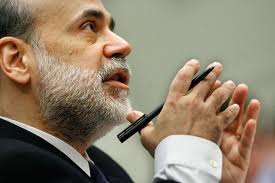En las dos últimas semanas no se ha hablado de otra cosa en los mercados que no fuera el comunicado de Reserva Federal de Estados Unidos. Pues bien, tal y como esperaba el mercado, la FED ha anunciado una nueva ronda de medidas cuantitativas (QE2) para dar un nuevo impulso a la economía, anunciando la compra de 600.000 millones de dólares en bonos hasta finales de 2011, empezando con 75.000 millones este mismo mes. Esta nueva inyección de capital ha superado el consenso de mercado que estimaba que sería de 500.000 millones. El Comité revisará regularmente el ritmo de compra de estos activos y el tamaño de su programa de compra y ajustará el programa en función de las necesidades para promover el máximo empleo y la estabilidad de precios.
Otra de las medidas es mantener los tipos de interés dentro de la horquilla 0%-0,25%, tal y como se esperaba.
También constatan desde la FED que la recuperación económica y la creación de empleo continua produciéndose a un ritmo lento y garantizan que mantendrán los tipos, sobre los fondos federales, bajos por un largo periodo de tiempo.
Aquí está el comunicado completo :
Press Release
For immediate release
Information received since the Federal Open Market Committee met in September confirms that the pace of recovery in output and employment continues to be slow. Household spending is increasing gradually, but remains constrained by high unemployment, modest income growth, lower housing wealth, and tight credit. Business spending on equipment and software is rising, though less rapidly than earlier in the year, while investment in nonresidential structures continues to be weak. Employers remain reluctant to add to payrolls. Housing starts continue to be depressed. Longer-term inflation expectations have remained stable, but measures of underlying inflation have trended lower in recent quarters.
Consistent with its statutory mandate, the Committee seeks to foster maximum employment and price stability. Currently, the unemployment rate is elevated, and measures of underlying inflation are somewhat low, relative to levels that the Committee judges to be consistent, over the longer run, with its dual mandate. Although the Committee anticipates a gradual return to higher levels of resource utilization in a context of price stability, progress toward its objectives has been disappointingly slow.
To promote a stronger pace of economic recovery and to help ensure that inflation, over time, is at levels consistent with its mandate, the Committee decided today to expand its holdings of securities. The Committee will maintain its existing policy of reinvesting principal payments from its securities holdings. In addition, the Committee intends to purchase a further $600 billion of longer-term Treasury securities by the end of the second quarter of 2011, a pace of about $75 billion per month. The Committee will regularly review the pace of its securities purchases and the overall size of the asset-purchase program in light of incoming information and will adjust the program as needed to best foster maximum employment and price stability.
The Committee will maintain the target range for the federal funds rate at 0 to 1/4 percent and continues to anticipate that economic conditions, including low rates of resource utilization, subdued inflation trends, and stable inflation expectations, are likely to warrant exceptionally low levels for the federal funds rate for an extended period.
The Committee will continue to monitor the economic outlook and financial developments and will employ its policy tools as necessary to support the economic recovery and to help ensure that inflation, over time, is at levels consistent with its mandate.
Voting for the FOMC monetary policy action were: Ben S. Bernanke, Chairman; William C. Dudley, Vice Chairman; James Bullard; Elizabeth A. Duke; Sandra Pianalto; Sarah Bloom Raskin; Eric S. Rosengren; Daniel K. Tarullo; Kevin M. Warsh; and Janet L. Yellen.
Voting against the policy was Thomas M. Hoenig. Mr. Hoenig believed the risks of additional securities purchases outweighed the benefits. Mr. Hoenig also was concerned that this continued high level of monetary accommodation increased the risks of future financial imbalances and, over time, would cause an increase in long-term inflation expectations that could destabilize the economy.
El señor Bernanke dixit.




